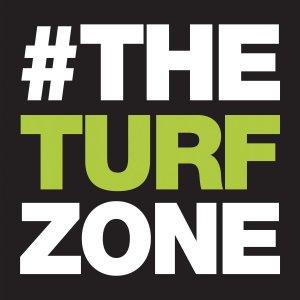The Turf Zone Podcast

Alabama Turfgrass Association – Timing of Herbicide Applications Affects Damage to Bahiagrass and Seedhead Suppression
ATA Turf Times – Dave Han, Ph.D., Associate Professor & Extension Specialist & Adam Boyd, Graduate Research Assistant, Department of Crop, Soil, & Environmental Sciences Auburn University Bahiagrass (Paspalum notatum) is a commonly-used grass for utility turf (roadsides, airports, etc.) and lawns in the southeastern United States. In Alabama, it is planted extensively by the Alabama Department of Transportation (ALDOT) as a permanent ground cover along roadsides (ALDOT, 2018). It is also used at many airfields, construction sites, utility rights of way, and some lawns. Bahiagrass has many advantages: it can be easily established by seed, is inexpensive, has an extensive root and rhizome system, has excellent drought tolerance, and does not require heavy fertilization. The major disadvantage of bahiagrass is that it produces many tall, unsightly seedheads. These grow quickly and can be two or three feet high only a few days after mowing. Mostly because of its seedheads, bahiagrass is not a popular choice for home and commercial lawns in areas where appearance is a high priority. Seedheads can also be a hazard on roadsides if they grow tall enough to block drivers’ views. Although mowing twice per week can control bahiagrass seedheads, this is often not practical. There are chemical methods to suppress seedhead formation and growth in bahiagrass. Low rates of herbicides such as imazapic (e.g. Plateau), metsulfuron (e.g. Escort, Manor, MSM Turf), sulfometuron-methyl (e.g. Oust) and glyphosate (e.g. Roundup) can be used to suppress seedhead formation (Murphy et al., 2005). These so-called “sub-lethal” rates still can produce unacceptable injury in bahiagrass (Yelverton et al. 2011). Some research (Sellers et al., 2011) has indicated that adding 2,4-D, an auxin mimic broadleaf herbicide, can safen metsulfuron application somewhat in bahiagrass pastures. Aminocyclopyrachlor is an auxin-mimic herbicide that is labeled for use on turf under the trade name ‘Method.’ Aminocyclopyrachlor has been shown to both suppress seedheads in bahiagrass for at least 60 days after treatment and also to stunt and discolor bahiagrass at high rates (Durham et al., 2011). In this project, we looked at a combination of aminocyclopyrachlor (as Method) and a product containing the herbicides foramsulfuron, iodosulfuron and thiencarbizone (Derigo) for seedhead control and damage to an established stand of bahiagrass on the roadside along US Highway 231 north of Wetumpka, Alabama. We also tested metsulfuron (MSM Turf) at very low rates. Derigo is labeled for seedhead suppression in bahiagrass, but it recommends that sprays begin after the bahiagrass is fully green. ALDOT often wishes to make herbicide applications in the spring before bahiagrass is fully greened up (H. Peavey, personal communication), to control late winter broadleaf weeds. We made single applications of various herbicides commonly used on roadsides by ALDOT beginning on April 1, 2019 to determine how early application, before bahiagrass greenup was complete, affected both phytotoxicity and seedhead suppression. The latest application was made on May 27. The herbicide treatments in this study were: * Derigo (2 oz/acre) + Method (4 oz/acre) * Derigo (3 oz/acre) + Method (4 oz/acre) * MSM Turf (0.125 oz/acre) * MSM Turf (0.25 oz/acre) Since metsulfuron will kill bahiagrass at regular label rates, we used very low rates in an attempt to achieve seedhead suppression with minimal phytotoxicity. Each treatment was applied as a single application on either April 1, April 14, April 29, May 13 or May 27, then followed through August and rated for bahiagrass coverage and seedhead suppression. Results Bahiagrass damage was much less severe when herbicides were applied early in the season and was progressively worse as the season wore on. As expected,






 Visit Podcast Website
Visit Podcast Website RSS Podcast Feed
RSS Podcast Feed Subscribe
Subscribe
 Add to MyCast
Add to MyCast